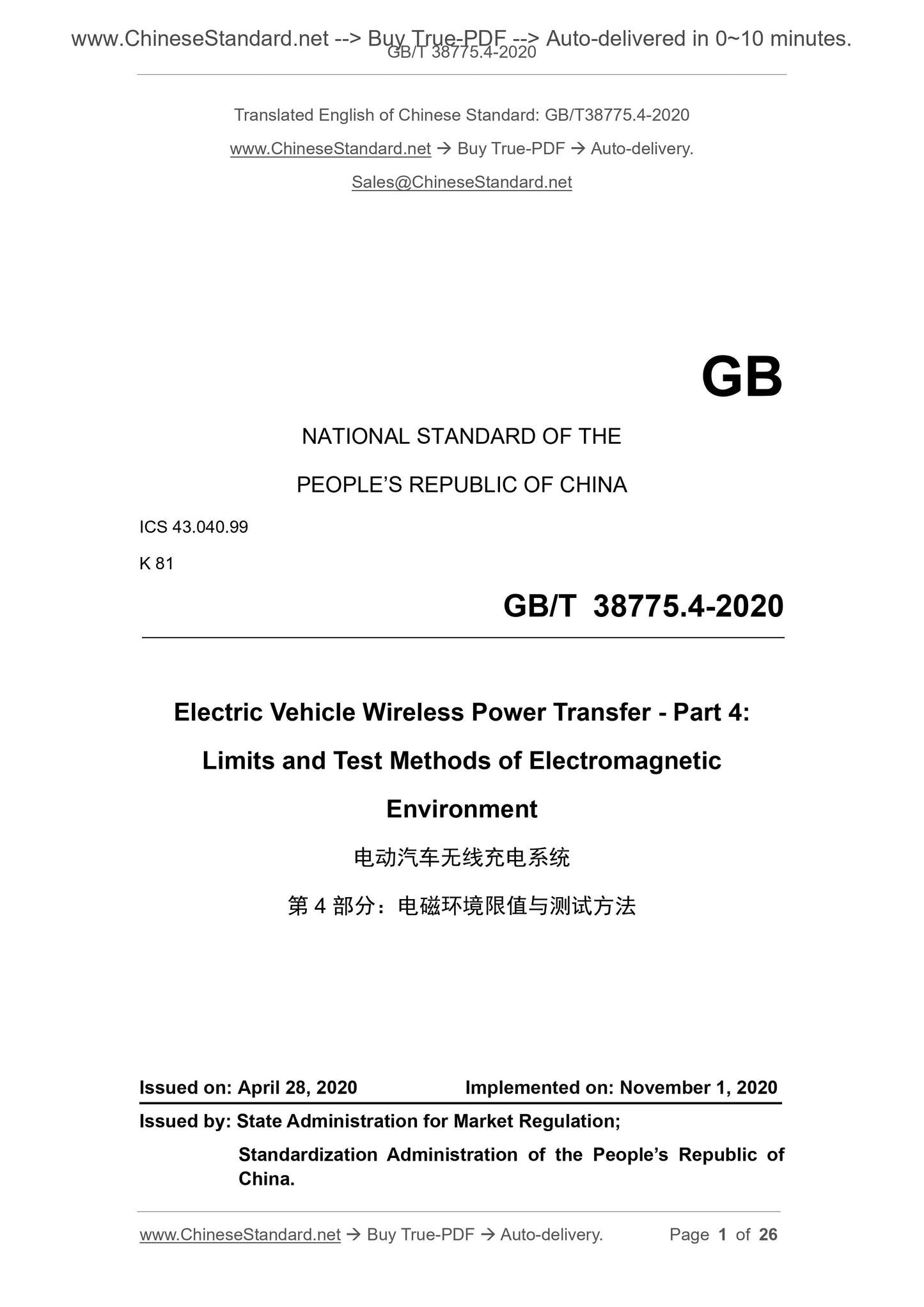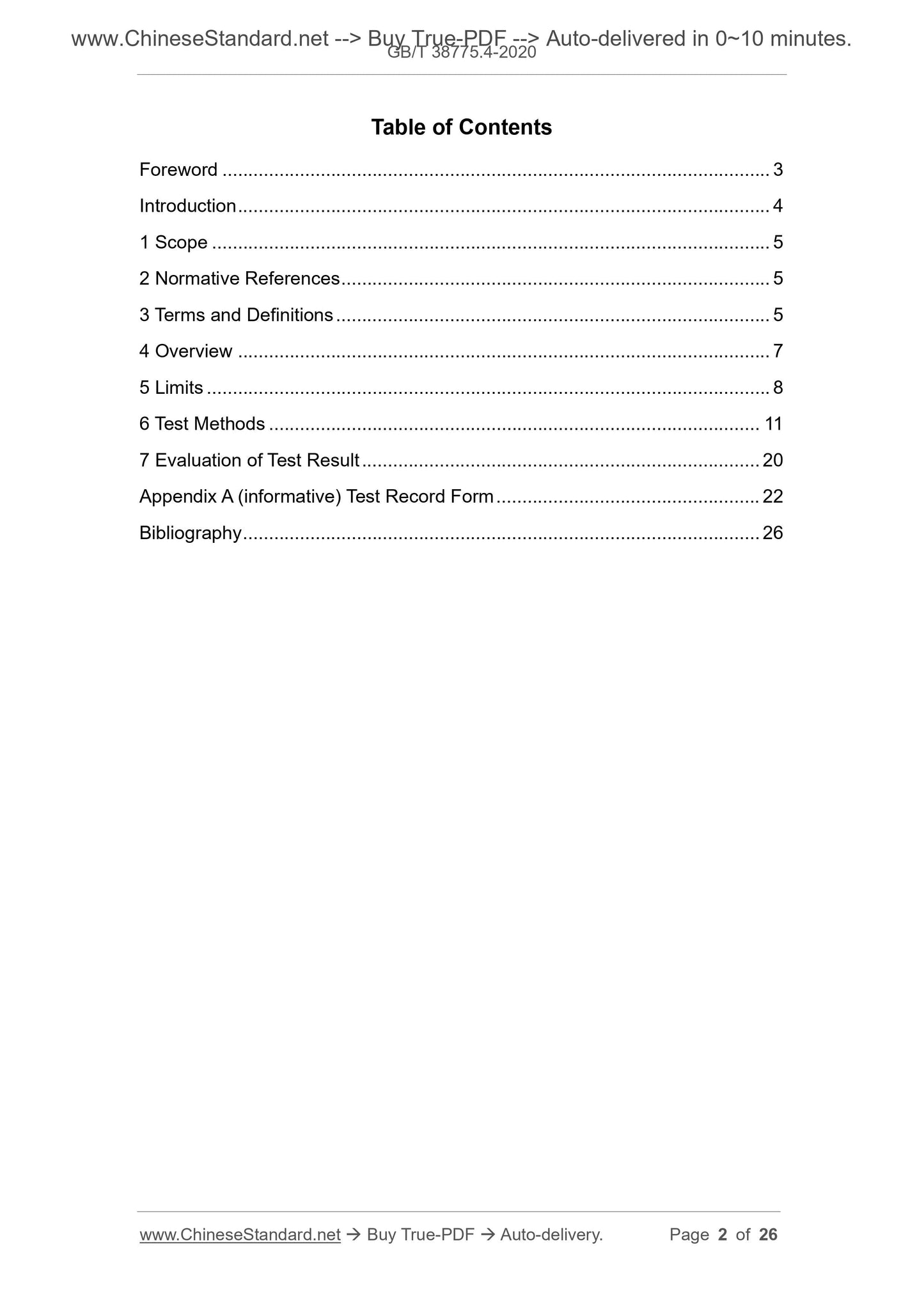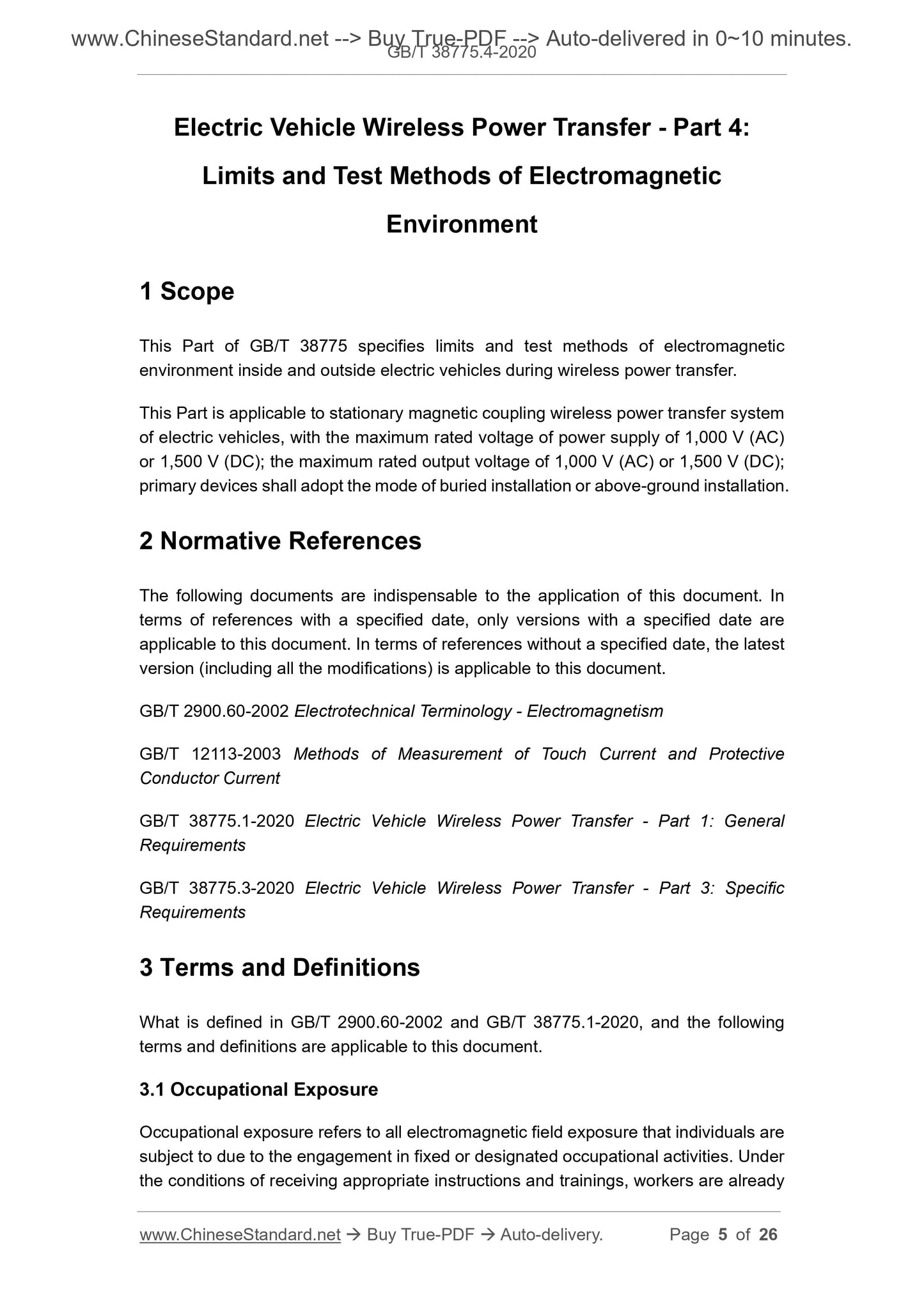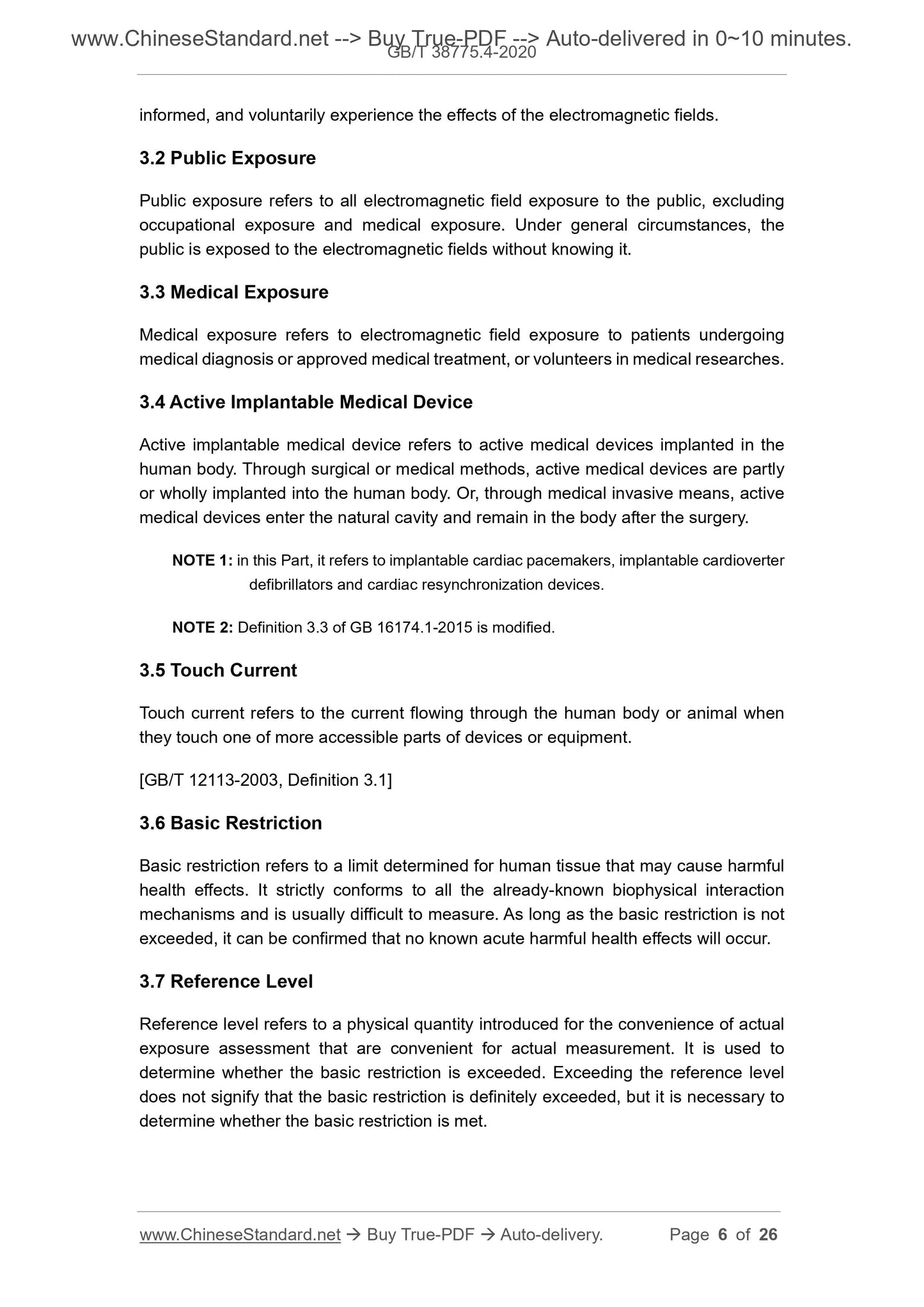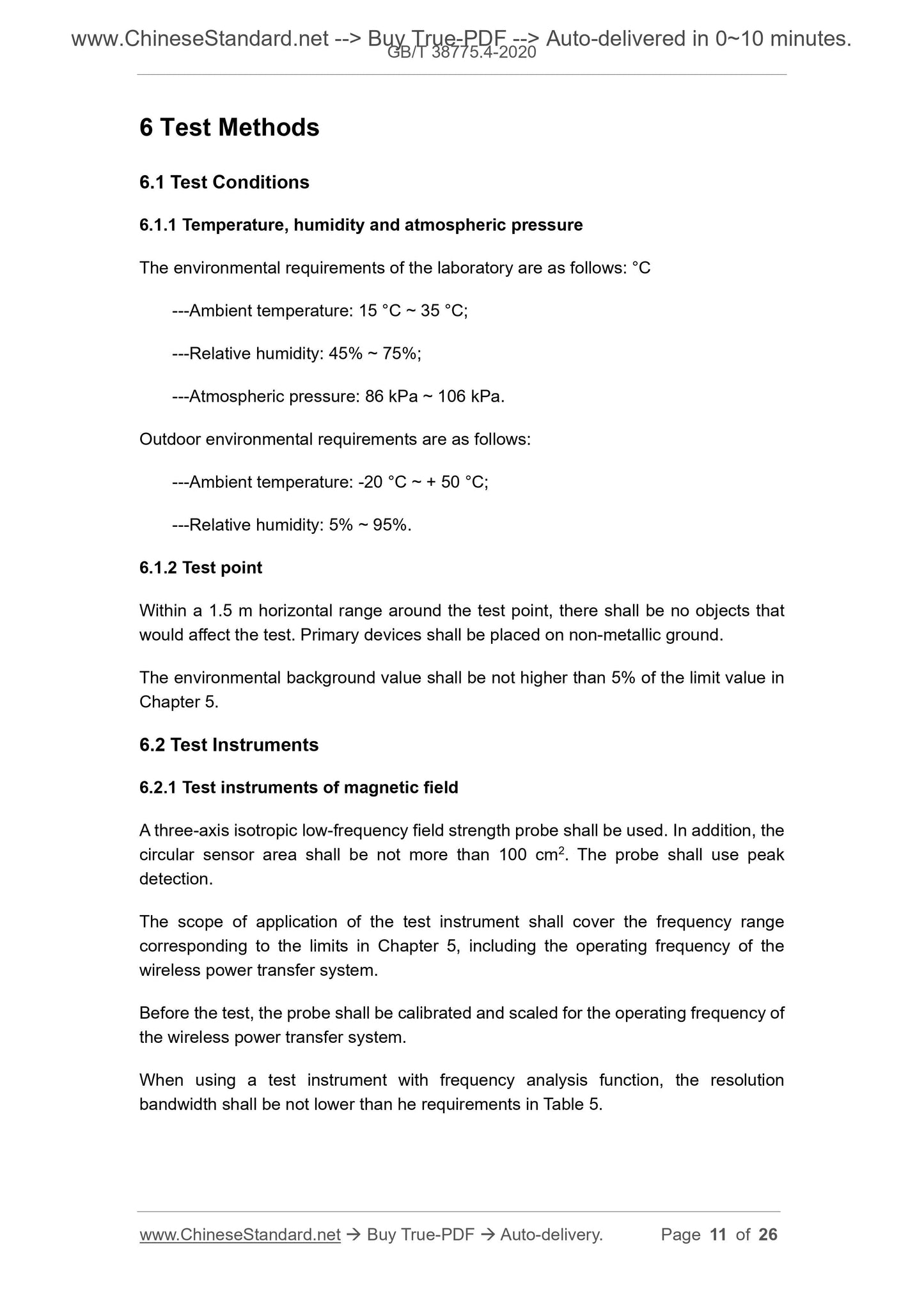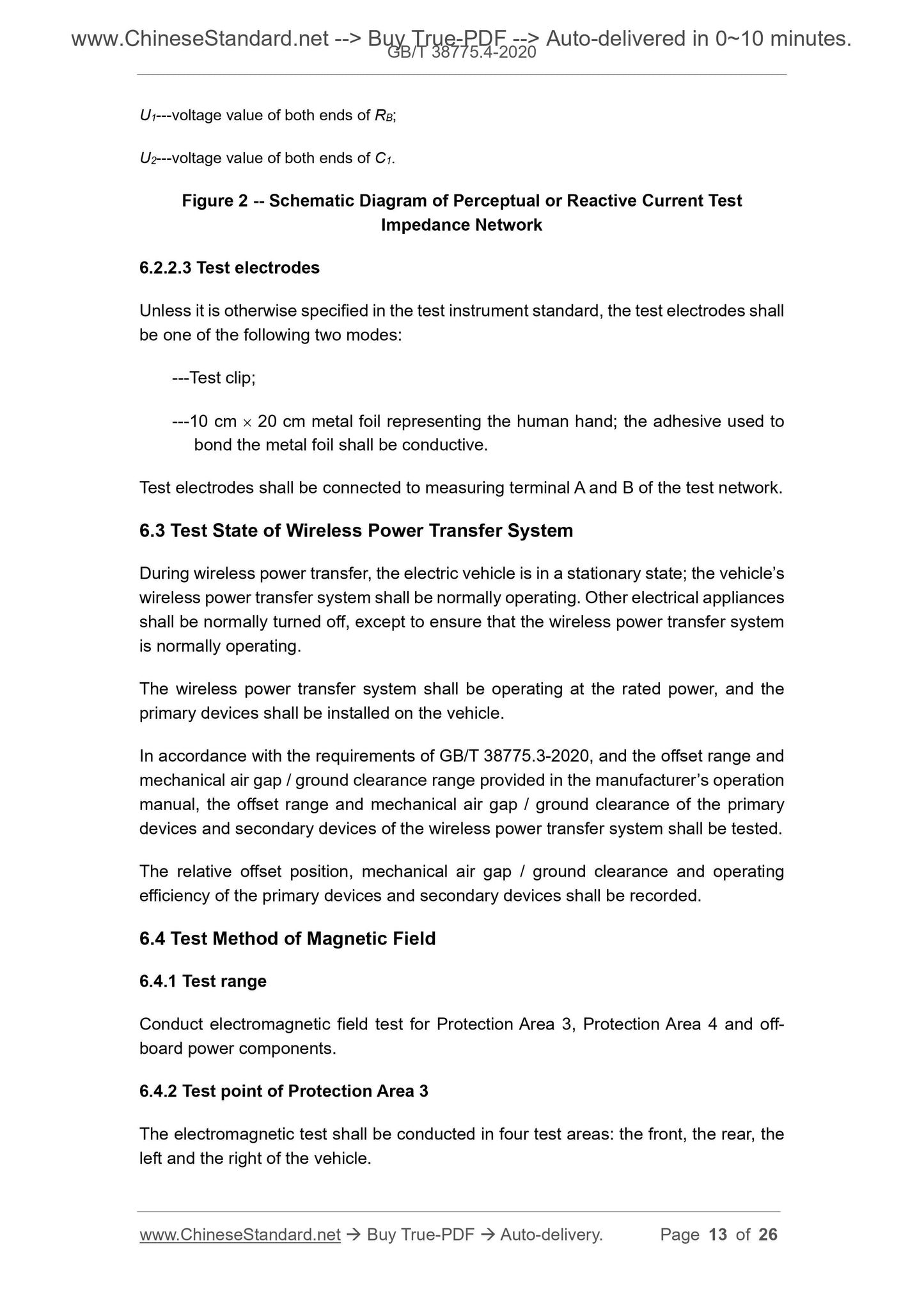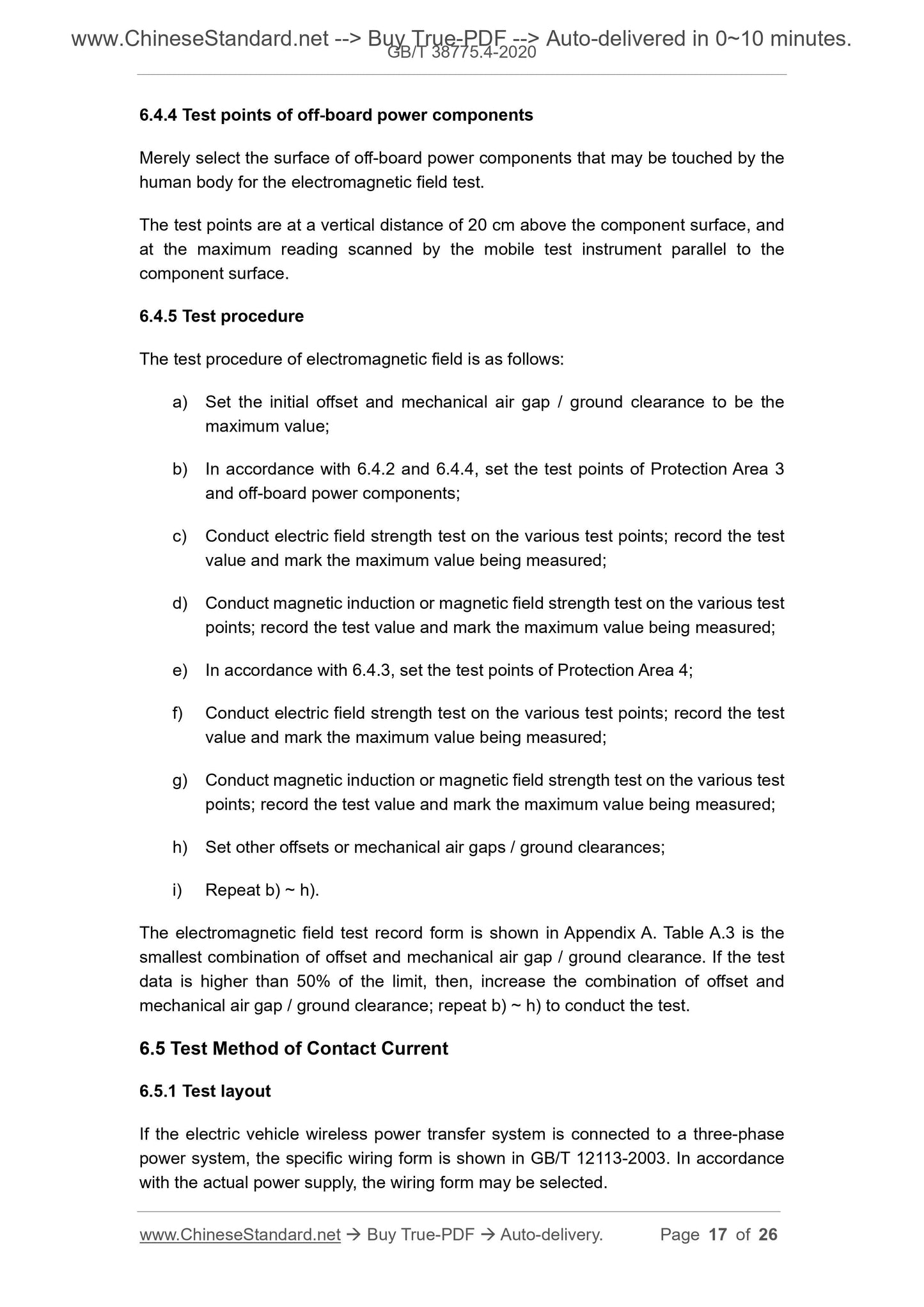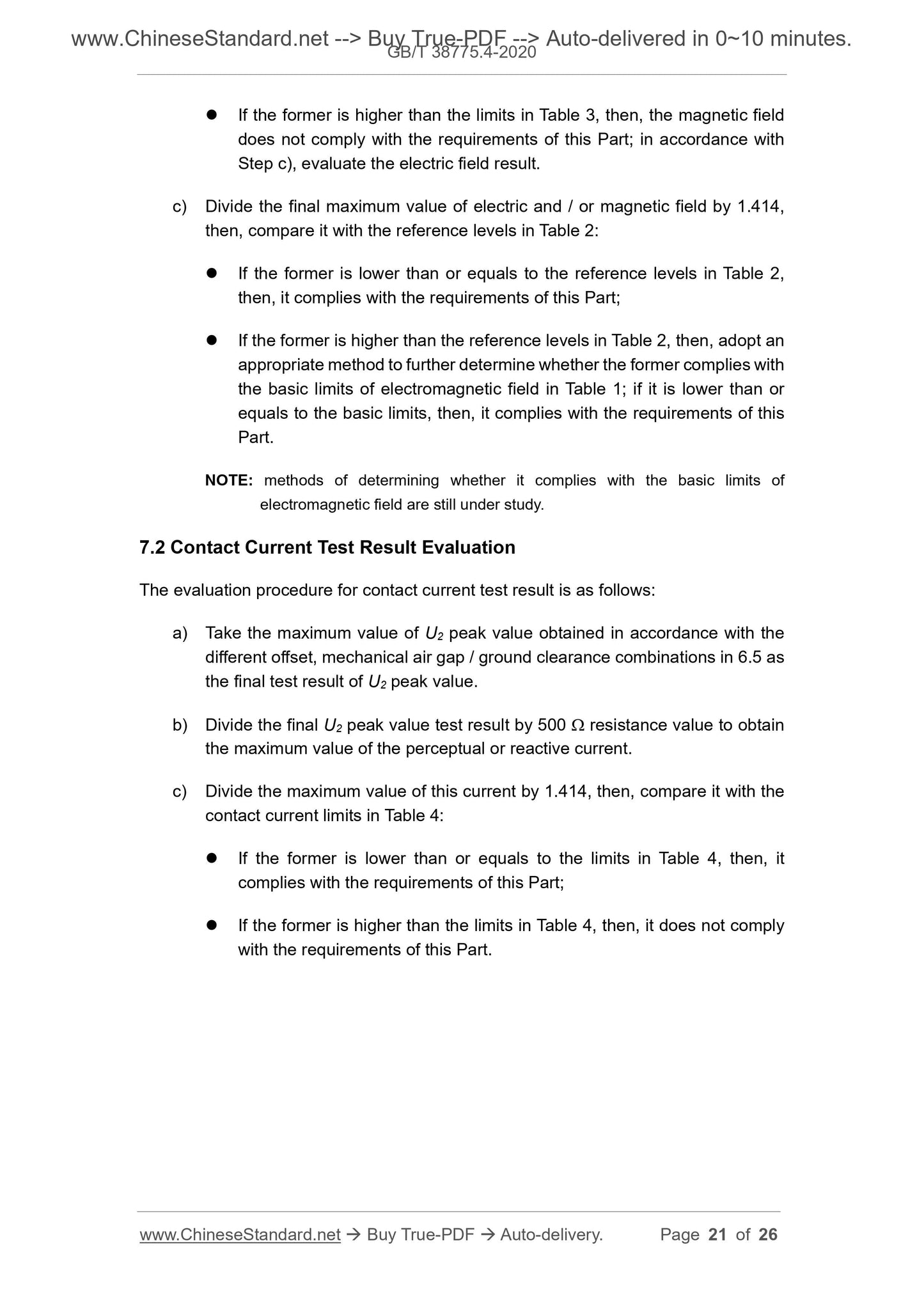1
/
of
8
www.ChineseStandard.us -- Field Test Asia Pte. Ltd.
GB/T 38775.4-2020 English PDF (GB/T38775.4-2020)
GB/T 38775.4-2020 English PDF (GB/T38775.4-2020)
Regular price
$200.00
Regular price
Sale price
$200.00
Unit price
/
per
Shipping calculated at checkout.
Couldn't load pickup availability
GB/T 38775.4-2020: Electric Vehicle Wireless Power Transfer - Part 4: Limits and Test Methods of Electromagnetic Environment
Delivery: 9 seconds. Download (and Email) true-PDF + Invoice.Get Quotation: Click GB/T 38775.4-2020 (Self-service in 1-minute)
Newer / historical versions: GB/T 38775.4-2020
Preview True-PDF
Scope
This Part of GB/T 38775 specifies limits and test methods of electromagneticenvironment inside and outside electric vehicles during wireless power transfer.
This Part is applicable to stationary magnetic coupling wireless power transfer system
of electric vehicles, with the maximum rated voltage of power supply of 1,000 V (AC)
or 1,500 V (DC); the maximum rated output voltage of 1,000 V (AC) or 1,500 V (DC);
primary devices shall adopt the mode of buried installation or above-ground installation.
Basic Data
| Standard ID | GB/T 38775.4-2020 (GB/T38775.4-2020) |
| Description (Translated English) | Electric Vehicle Wireless Power Transfer - Part 4: Limits and Test Methods of Electromagnetic Environment |
| Sector / Industry | National Standard (Recommended) |
| Classification of Chinese Standard | K81 |
| Classification of International Standard | 43.040.99 |
| Word Count Estimation | 18,142 |
| Date of Issue | 2020-04-28 |
| Date of Implementation | 2020-11-01 |
| Issuing agency(ies) | State Administration for Market Regulation, China National Standardization Administration |
Share
